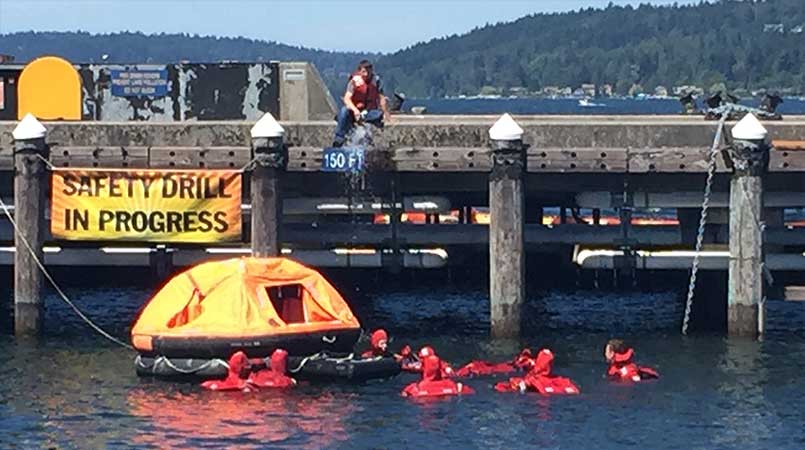People who work in the maritime industries know that safety is always the number one priority.
This is much more than just a saying, though. Whether you’re in marine construction, shipping, commercial fishing, transportation, offshore oil and gas exploration, or dockside support services, the hazards that surround the maritime industries and the marine environment are extreme and ever-present.
Maritime workers are at constant risk of exposure to hazardous chemicals, high voltages, heavy machinery, sharp objects, slips and falls, bloodborne pathogens, severe weather, and drowning. The remote nature of work at sea demands that commercial mariners remain vigilant about their own safety at all times. Medical attention is often hours, or even days away.
Maritime workers are well aware of these dangers, and safety is woven into everything they do. But for all of their training, skill, equipment, and preparation, marine casualties are still extraordinarily common. Maritime industries consistently rank among the highest for both fatal and non-fatal injuries. The Bureau of Labor Statistics names commercial fishing as the second-most-dangerous occupation in the United States, averaging more than 80 fatalities per 100,000 employees in 2015, second only to commercial logging, which averages 109 fatalities per 100,000. Marine fatalities had been previously much higher until the U.S. Coast Guard (USCG) recognized this alarming trend, and began implementing a series of strategic safety and enforcement actions known as Marine Safety & Environmental Protection (MSEP).
The U.S. Coast Guard requires commercial vessel owners and operators to maintain a valid USCG vessel safety certification, in addition to any number of applicable state and federal operating permits. Requirements for certification include the presence of a wide variety of life-saving and emergency response equipment, adequate safety and emergency response training for employees, written documentation of safety procedures and assignments, complete and accurate incident logs, performance of safety briefings and drills on a periodic basis, and many other requirements depending on the specific industry or vessel in question.
The safety of human life is not the only concern at sea, however. Maritime industries present substantial risk to the health of the marine environment. Hazardous chemicals including fuels, lubricant oils, corrosives, solvents, concentrated cleansers and detergents, and marine construction materials present a danger to marine wildlife. The EPA and USCG work in partnership to enforce federal marine pollution laws and international marine pollution treaties such as MARPOL Annex VI — and they are serious about enforcement. Fines in excess of $20 million have been levied against vessel owners for both safety and environmental-related violations.
To protect employees and the environment from the innumerable risks inherent to maritime industries, vessel owners and operators should not only provide their workers with adequate training and equipment, but also implement an effective EHS management system. VelocityEHS provides a centralized software tool for documenting and monitoring compliance with required permits and certifications, recording and tracking incidents and environmental releases, organizing and instantly accessing safety data sheets (SDSs) for hazardous chemicals onboard or at their facilities, performing safety and regulatory audits and inspections, training employees in safety at sea, and conducting required safety briefings and drills.
With such a system in place, vessel owners can more effectively protect the safety of their crews, monitor their impact on the marine environment, and greatly reduce the risk of massive fines and penalties for non-compliance.
In support of National Safety Month, VelocityEHS is sharing tips and information throughout the month of June to help EHS professionals strengthen their commitment to worker safety. Follow along on Twitter and LinkedIn for more information.
